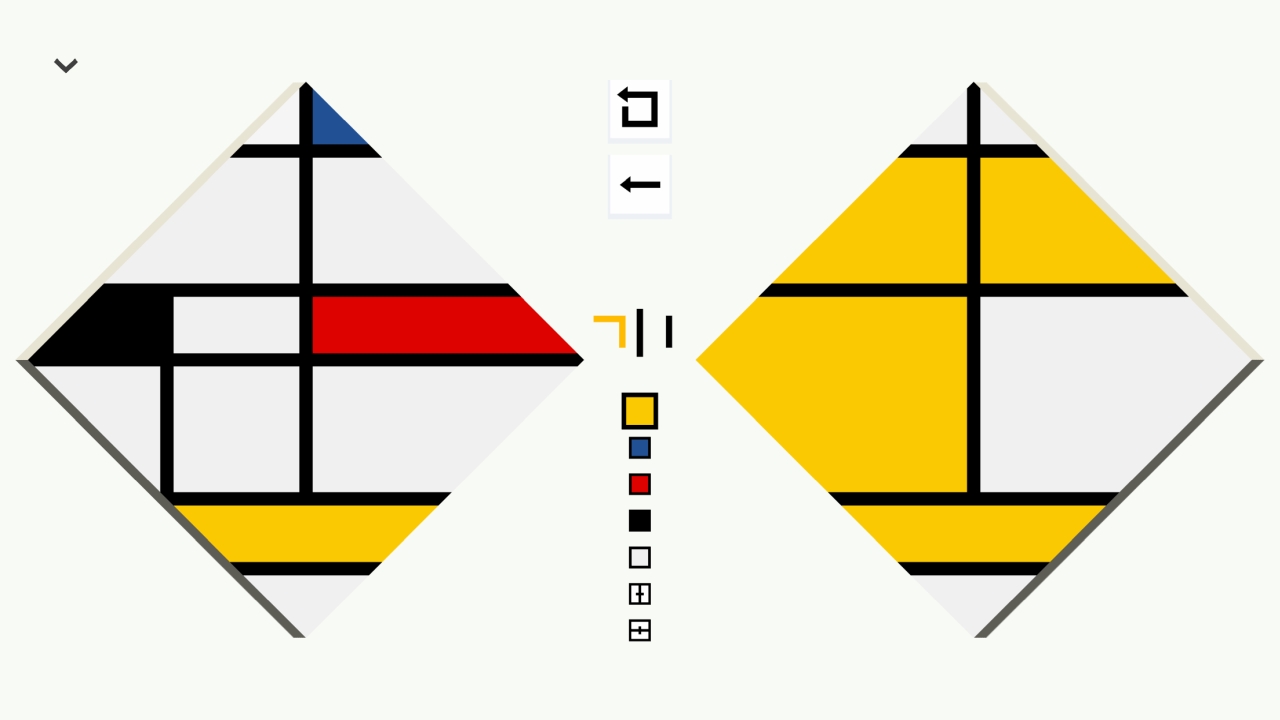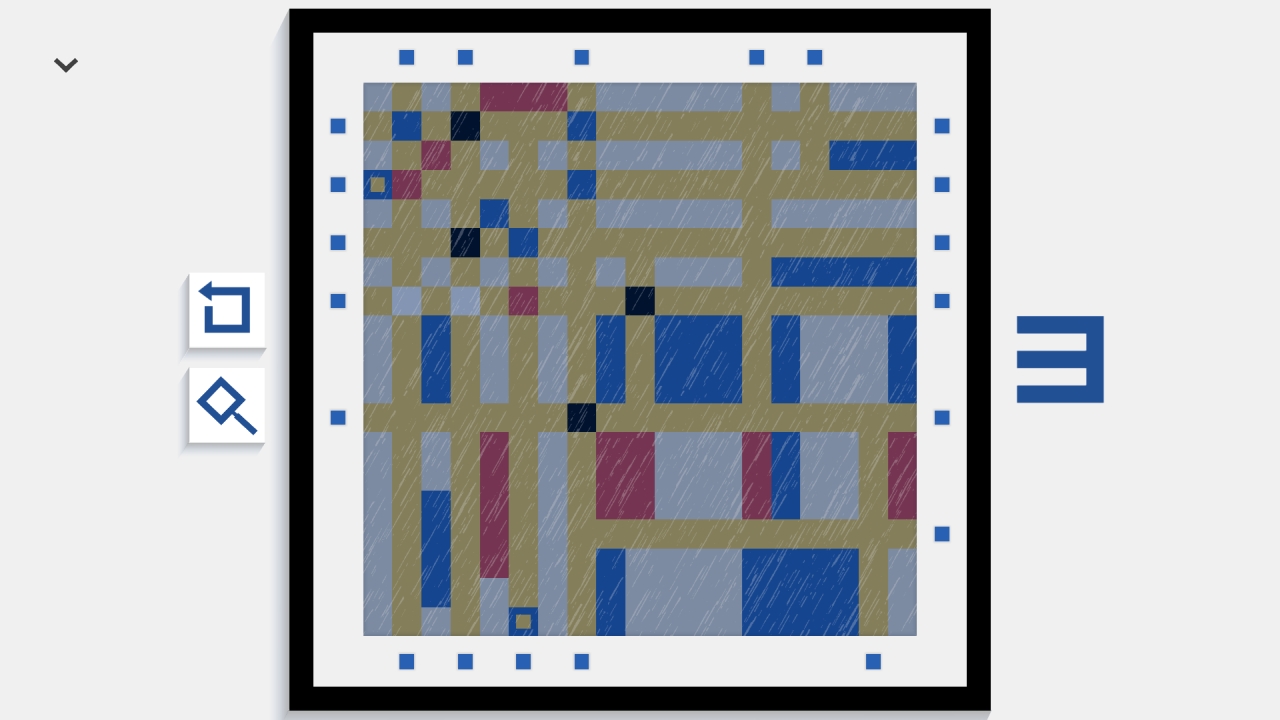Inspired by and set within the calm environs of a modern art gallery, Please Touch the Artwork is a creative and intelligent puzzle game curated to be soothing. It plays with colour and design to present innovative puzzles that genuinely make you think outside the box.
Please Touch the Artwork tells you upfront that it is not intended to be stressful. You’re supposed to relax, to lose yourself in the images and the stories they create. The studio absolutely nailed this. The puzzles aren’t timed or tracked. This game isn’t about beating anything, but about enjoying the process of moving through it. It does tell you how many moves each puzzle should take, but that’s more helpful than judgemental.
The game takes place in a minimalist art gallery. Silhouetted people amble between frames on the walls that take you into each level when clicked. Please Touch the Artwork is split into three separate galleries, each featuring a different type of puzzle.
One requires you to recreate paintings on blank squares of canvas by adding lines and colours with single taps in a specific order. Another requires you to move little squares through an increasingly complex series of tubes, collecting other squares along the way to unlock the next level. The last requires you to reunite two love-stricken blocks struggling to be together in an ever more chaotic world, which turns a very simple puzzle into a deep and profound metaphor for human connection.
The thought and effort that has gone into making this game shines through at every juncture. It’s a very nice touch that this game – predominantly based on colour – offers a colour-blind mode as standard. The modern art theme is baked into every element of it, shaping the menu and the instructions in a way that makes it easy to relax into. It even offers some fun facts about modern art.
Please Touch the Artwork gets you thinking creatively early on. The pacing of the puzzles is fantastically arranged. The game eases you into more complex thinking so gradually you hardly notice, whether that’s the difficulty of the puzzles or the emotional weight of the story woven between them.
The narrative element, as well as offering some depth, also provides an incentive to go back to the game even when you know how to solve all the puzzles. It’s the kind of simple yet moving tale that grips you, despite starring a couple of two-dimensional featureless blocks.








